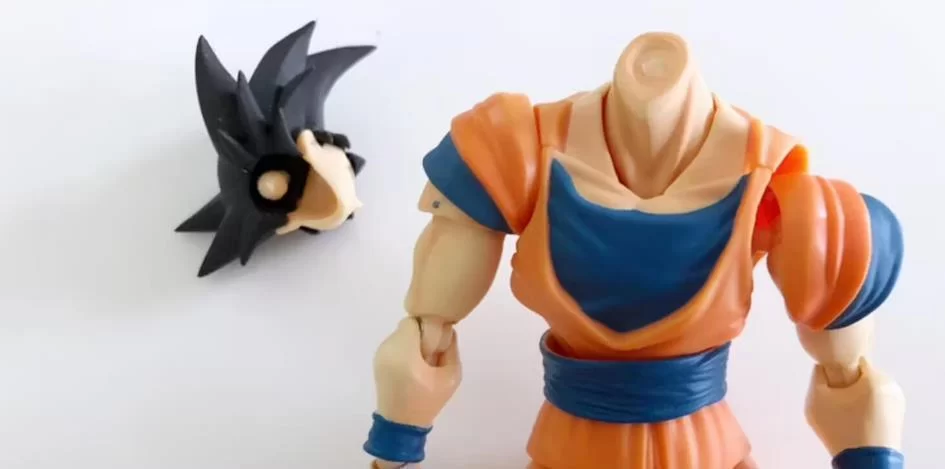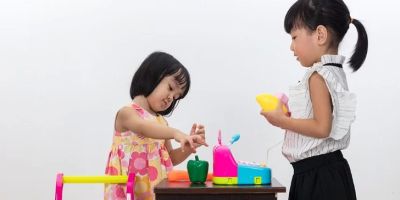
Spotting Bootleg Anime Figures: A Collector's Guide to Identifying Fakes
As a passionate anime figure collector, there's nothing more disheartening than purchasing a figure only to find out it's a counterfeit. Whether you're a seasoned collector or just getting into the world of anime merchandise, knowing how to identify a bootleg anime figure is crucial. In this article, I'll walk you through my personal experiences and share some valuable tips on how to avoid fake figures, so you can ensure you're adding the real deal to your collection.
The Growing Issue of Bootleg Anime Figures in the U.S.
Anime figures have grown significantly in popularity in the U.S., and with that growth, the market for counterfeit figures has also surged. Bootlegs are often sold online through various marketplaces, making it harder for buyers to distinguish between authentic and fake items. These bootleg figures are not only of lower quality, but they also lack the unique charm of authentic pieces, and in many cases, they are sold at prices that are too good to be true.
I remember when I first started collecting anime figures. I was eager to add some rare characters to my collection, and I made the mistake of purchasing a figure from a marketplace without researching the seller. When the figure arrived, it looked slightly off—some paint imperfections, weird proportions, and a strange smell. It was clear I had bought a bootleg. At first, I was frustrated, but this experience taught me how to better identify fake figures moving forward.
What Makes a Bootleg Anime Figure Different from the Real Thing?
To successfully identify a bootleg anime figure, it’s important to know what sets authentic figures apart. Several key factors can help you differentiate between a genuine product and a counterfeit.
1. Price
One of the most noticeable red flags when it comes to bootleg figures is the price. If the deal sounds too good to be true, it probably is. Authentic anime figures are often priced higher due to the quality of materials, attention to detail, and licensing fees involved. On the other hand, bootleg figures are usually sold at significantly lower prices because they are made with cheaper materials and inferior craftsmanship. While this might be tempting for new collectors, buying cheap often leads to disappointment in the long run.
2. Packaging
Authentic anime figures typically come in high-quality packaging with clear logos, detailed information, and secure, protective materials. The packaging of bootleg figures is often poorly printed with low-quality materials. When you receive your figure, carefully inspect the box. Check for faded colors, blurry text, or a lack of licensing marks that usually appear on official packaging. If the packaging looks off or feels flimsy, chances are the figure inside might be a fake.
3. Sculpt and Paint Quality
Authentic anime figures are made with precision and attention to detail. The sculpting is generally very sharp, and the paint application is clean, with no smudging or misalignment. On the other hand, bootleg figures often have noticeable flaws. You might find uneven paint jobs, areas where the paint is chipped or missing, or mismatched colors that don't reflect the character’s design accurately.
One of my favorite figures is a detailed portrayal of an iconic character. When I first saw a bootleg version of this figure online, I couldn't resist checking it out due to the low price. However, upon closer inspection, the face sculpt was slightly distorted, and the paint on the hair was a little sloppy. I could immediately tell this wasn’t the same quality as the authentic figure I had in my collection.
4. Material and Weight
The material used in authentic figures is generally high-quality PVC or ABS plastic, which gives them a solid feel and weight. Bootleg figures, however, are often made from cheaper materials that make them feel lighter or more brittle. If the figure feels unusually light or flimsy, it’s a strong indicator that it could be a counterfeit.
How to Protect Yourself from Buying Fake Anime Figures
Now that you know the key differences between bootlegs and authentic figures, here are some practical tips to avoid getting tricked by sellers:
1. Buy from Trusted Sources
One of the best ways to avoid purchasing bootleg figures is to buy from reputable retailers or official stores. Many online marketplaces and stores provide buyer protection, so you can be confident in the authenticity of the figures you're purchasing. Additionally, websites dedicated to anime merchandise often feature licensed products and have measures in place to prevent counterfeit sales.
When I first started, I used to make the mistake of buying figures from lesser-known sellers. Now, I always stick to trusted platforms like official retailers, well-known online stores, or specialized anime shops. Not only does this ensure I'm getting the real thing, but it also helps support the creators who make these figures possible.
2. Research the Seller
If you're shopping on a platform where multiple sellers are involved, it's essential to research the seller’s ratings and reviews. Look for feedback from other buyers, and avoid purchasing from sellers with negative reviews or a history of selling counterfeit products. You can also check out online communities and forums where collectors share their experiences with various sellers.
3. Join the Anime Figure Community
The anime figure collecting community is vibrant and full of passionate collectors who love to share tips and knowledge. Joining forums, social media groups, or attending conventions is a great way to connect with others who can help you spot bootlegs and learn about reputable sources for purchasing authentic figures. Over time, you’ll develop a better eye for identifying fakes and be able to make more informed decisions.
Real-Life Example: My Encounter with a Bootleg Figure
I'll share a story of a figure I had been eyeing for months. It was a rare and highly sought-after character, and I found a deal online that seemed too good to pass up. I eagerly clicked "Buy Now," and within a few days, my package arrived. But when I opened the box, my excitement quickly turned to disappointment. The figure’s proportions were off, the paint was smudged, and the plastic felt cheap in my hands. It was a bootleg, and I had unknowingly fallen into the trap.
This experience, though frustrating, served as an important lesson. Since then, I’ve been much more cautious about where I buy my figures from. I’ve also learned to examine every aspect of a figure before purchasing it, from the price to the packaging and the material. Most importantly, I’ve joined online communities of collectors who share their experiences, which has been invaluable in helping me avoid future mistakes.
Conclusion
Identifying bootleg anime figures can be tricky, but with a little knowledge and a keen eye, you can protect yourself from counterfeit products and ensure you're adding high-quality figures to your collection. Remember to always be cautious when making purchases, especially when the deal seems too good to be true. By following the tips outlined in this article, you’ll be well-equipped to spot fake anime figures and enjoy the thrill of owning authentic, beautifully crafted pieces of your favorite anime characters.





